|
Droppers
-
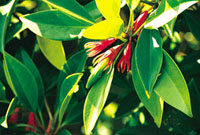 |
|
A dropper of Bruguiera gymnorrhiza
|
Germinated seeds that attach to the parent plant of mangroves (e.g. Bruguiera gymnorrhiza) after germination.
- This kind of viviparous reproduction allows rapid growth and establishment of mangrove seedlings once they come into contact with the substratum.
- It increases the survival rate of the mangroves in the unstable substratum and the intertidal environment.
|
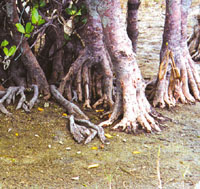 |
|
Prop roots of Kandelia obovata
|
Prop roots
- Branched supporting roots that arise from the lower trunk of some mangrove species (e.g. Kandelia obovata).
- Provide additional stability to the trees in the soft unstable substratum by broadening the tree base.
|
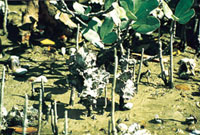 |
|
Pneumatophores of Avicennia marina
|
Pneumatophores
- Erect aerial roots arising from cable roots to facilitate gaseous exchange of the roots of some mangrove species (e.g. Avicennia marina) under water-logged soil condition
- Contain aerenchyma tissue to allow rapid gaseous transportation.
|
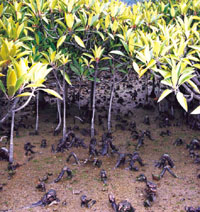 |
|
"Knee" of roots of Bruguiera gymnorrhiza
|
"Knees" of roots
- The roots of some mangrove species (e.g. Bruguiera gymnorrhiza, Kandelia obovata) form into "knees" that project above the mud surface to facilitate gaseous exchange.
|
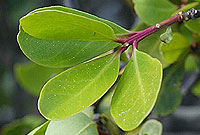 |
|
Salt glands of Aegiceras corniculatum
|
Salt glands
- Present in the leaves of some mangrove species (e.g. Aegiceras corniculatum).
- Used to concentrate and actively excrete the absorbed salts so as to regulate the salt concentration inside the mangroves.
|
|